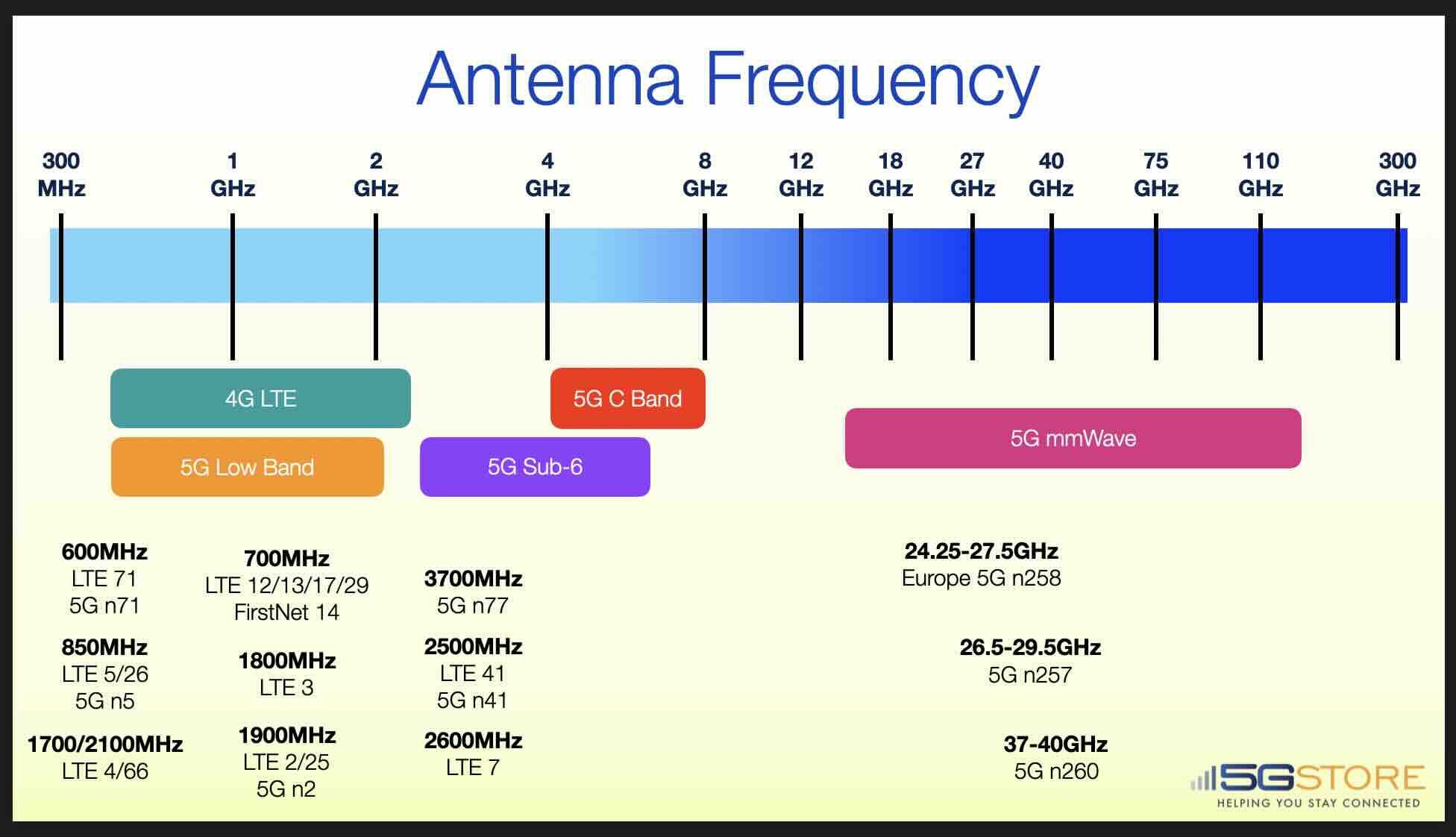


Antennas play a critical role in the transmission and reception of cellular signals. They are designed to emit or receive electromagnetic waves, which carry information such as voice, data, and video, over the air. In the case of cellular networks, antennas are used to communicate between the mobile devices and the base stations. When you make a call or send a message on your smartphone, your device sends the signal to the nearest base station via an antenna, which then relays the signal to its destination.
But what about antenna frequencies? How do they impact cellular communication?
LTE (Long-Term Evolution) and 5G (5th Generation) cellular frequencies are used for wireless communication over cellular networks. LTE and 5G use various frequency bands depending on the region and the cellular operator. Generally speaking, LTE uses lower frequencies than 5G. Some are similar however, but are expanded to include additional frequency ranges (e.g. LTE Band 71 and 5G Band 71). It's important to note that frequency bands used by LTE and 5G vary between countries and network operators.
The use of different frequency bands can impact the speed, coverage, and penetration of wireless signals. Higher frequency bands can provide faster data speeds and lower latency, but they may have lower coverage and penetration compared to lower frequency bands. This is why it's important to choose the right antenna frequency for your specific use case. Whether you're building a cellular network, designing a wireless device, or simply trying to improve the signal quality on your smartphone or modem, understanding antenna frequencies is essential.
At 5Gstore.com, we specialize in providing high-quality antennas for cellular networks, WiFi, and GPS. Our antennas are designed to meet the specific needs of your project, whether you're looking for a low-cost solution for a small deployment or a high-performance antenna for a large-scale network.
LTE Band 14 is a frequency band used by cellular networks in the United States for wireless communication. It operates in the range of 758 MHz to 763 MHz for the uplink (mobile device to base station) and 788 MHz to 793 MHz for the downlink (base station to mobile device).
Band 14 is part of the LTE standard and is used exclusively by public safety agencies, as part of the First Responder Network Authority (FirstNet) initiative. FirstNet is a nationwide, high-speed wireless broadband network that is dedicated to public safety agencies, providing them with a reliable and secure means of communication during emergencies and other critical situations.
One of the main advantages of Band 14 is its ability to provide priority access and preemption to public safety agencies during emergencies. This means that public safety agencies have priority access to the network, even during times of high network congestion, ensuring that they can communicate effectively during critical situations.
Band 14 is currently operated by AT&T, which was awarded the contract to build and operate the FirstNet network. AT&T has deployed Band 14 in many parts of the country, providing public safety agencies with access to a reliable and secure means of communication during emergencies.
It's important to note that Band 14 is not available for commercial use, and is exclusively reserved for public safety agencies as part of the FirstNet initiative. This ensures that public safety agencies have access to a dedicated and reliable means of communication during emergencies and other critical situations.